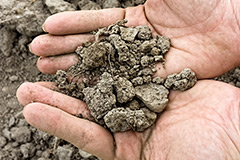
Blue Line
707 105 555
Environment
GASES USED
In the biological treatment of effluents, oxygen is essential for the respiration of microorganisms. The selective introduction of oxygen into the effluent improves the efficiency of the treatment plants and helps to self-clean the water.

PH REGULATION AND NEUTRALIZATION OF EFFLUENTS
The use of CO2 in the neutralization of effluents, due to the use of inorganic acids, is advantageous because it is an inert and safe product, which does not require manipulation, allows a controlled and light regulation of the pH to 1/10 unit, without risk Over-acidification and neutralization without side effects.

OXIDATION OF SULFURETES AND ELIMINATION OF SMELLS
Odor problems at WWTPs and Stations can be corrected with the use of pure Oxygen in the odor source area to oxidize Sulfur in the sulfide state - the smell of which is detectable at very low concentrations.

TREATMENT OF CONTAMINATED SOILS
The use of oxygen can be done in the processes of bioremediation and composting, in soil treatment through biological degradation.

WASTE INCINERATION
The use of oxygen in the primary and secondary incineration chambers improves combustion, eliminates harmful organic compounds, improves incineration capacity, reduces fuel costs and reduces NOx, SOx and CO emissions in the atmosphere.

CONTROL OF ENVIRONMENTAL EMISSIONS
Special gases and blends of special gases are used for calibration and auditing of analyzers and environmental equipment used for continuous emission monitoring.

VAPOR EMISSION CONTROL
Special gas mixtures are used to calibrate production process monitoring equipment that involves the direct or indirect use of volatile organic compounds, so that emissions of vapors do not violate national standards or exceed established limits.

VEHICLE EMISSION CONTROL
Special gases are used in specific instruments to detect Carbon Monoxide, Carbon Dioxide and Hydrocarbons.